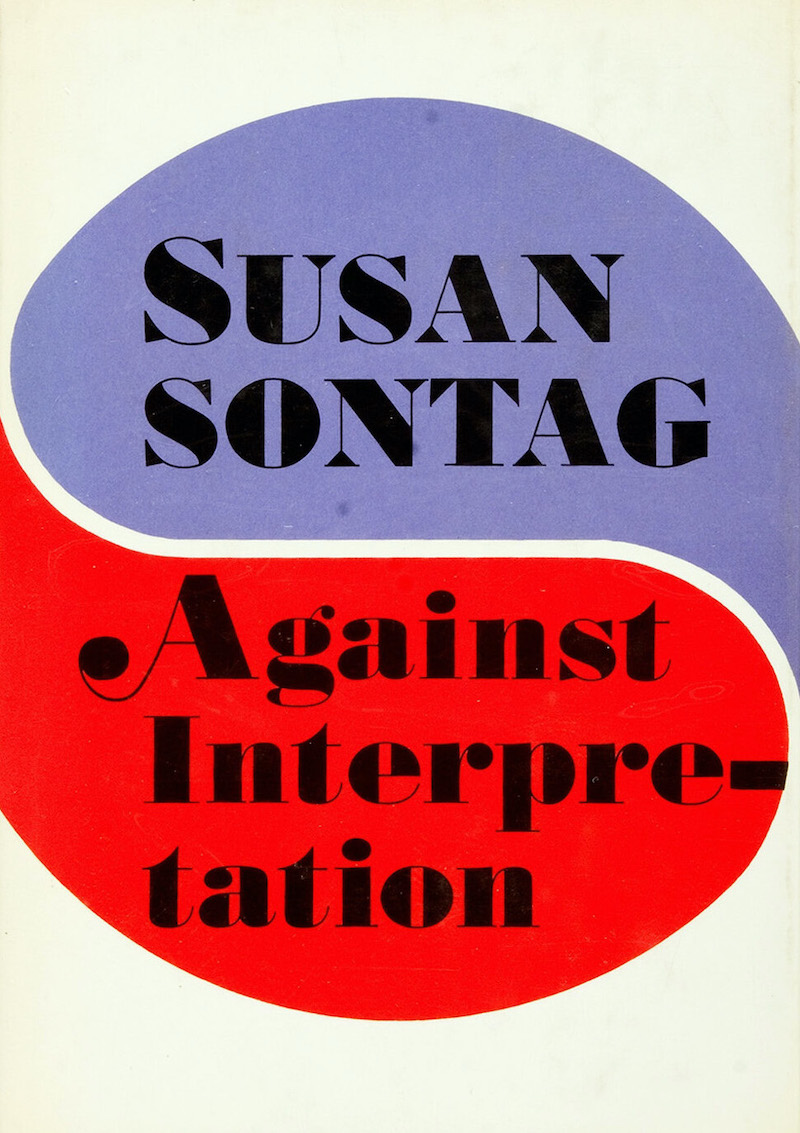
Against interpretation
Susan Sontag
Interpretation makes art manageable, conformable. For decades now, literary critics have understood it to be their task to translate the elements of the poem or play or novel or story into something else.
Interpretation, based on the highly dubious theory that a work of art is composed of items of content, violates art. It makes art into an article for use, for arrangement into a mental scheme of categories.
We must learn to see more, to hear more, to feel more. [...] Our task is not to find the maximum amount of content in a work of art, much less to squeeze more content out of the work of art than is already there. Our task is to cut back content so that we can see the thing at all.
The main tradition of criticism in all the arts, appealing to such apparently dissimilar criteria as verisimilitude and moral correctness, in effect treats the work of art as a statement being made in form of a work of art. To treat works of art in this fashion is not wholly irrelevant. But it is, obviously, putting art to use. [...] A work of art encountered as a work of art is an experience, not a statement or an answer to a question. Art is not only about something; it is something. A work of art is a thing in the world, not just a text or a commentary on the world.
The knowledge we gain through art is an experience of the form or style of knowing something, rather than a knowledge of something (like a fact or a moral judment) in itself.
The moral pleasure peculiar to art is not the pleasure of approving of acts or disapproving of them. The moral pleasure in art, as well as the moral service that art performs, consists in the intelligent gratification of consciousness. [...] Only when works of art are reduced to statements which propose a specific content, and when morality is identified with a particular morality — only then can a work of art be thought to undermine morality.
Not many people are capable of adjusting their perceptive apparatus to the pane and the transparency that is the work of art. Instead, they look right through it and revel in the human reality with which the work deals.
For the sense in which a work of art has no content is no different from the sense in which the world has no content. Both are. Both need no justification; nor could the possibly have any. [...] That is to say, the world (all there is) cannot, ultimately, be justified. Justification is an operation of the mind which can be performed only when we consider one part of the world in relation to another — not when we consider all there is.
A work of art is a kind of showing or recording or witnessing which gives palpable form to consciousness; its object is to make something singular explicit. [...] What a work of art does is to make us see or comprehend something singular, not judge or generalize.
Here is where the modern cult of love enters: it is the main way in which we test ourselves for strength of feeling, and find ourselves deficient. [...] The cult of love in the West is an aspect of the cult of suffering. [...] The sensibility we have inherited identifies spirituality and seriousness with turbulence, suffering, passion.
Moral beauty in art — like physical beauty in a person — is extremely perishable. It is nowhere so durable as artistic or intellectual beauty. Moral beauty has a tendency to decay very rapidly into sententiousness or untimeliness.
Action is not Camus' first concern. The ability to act, or to refrain from acting, is secondary to the ability or inability to feel. [...] Camus' life and work are not so much about morality as they are about the pathos of moral positions.
Is it the obligation of great art to be continually interesting? I think not.